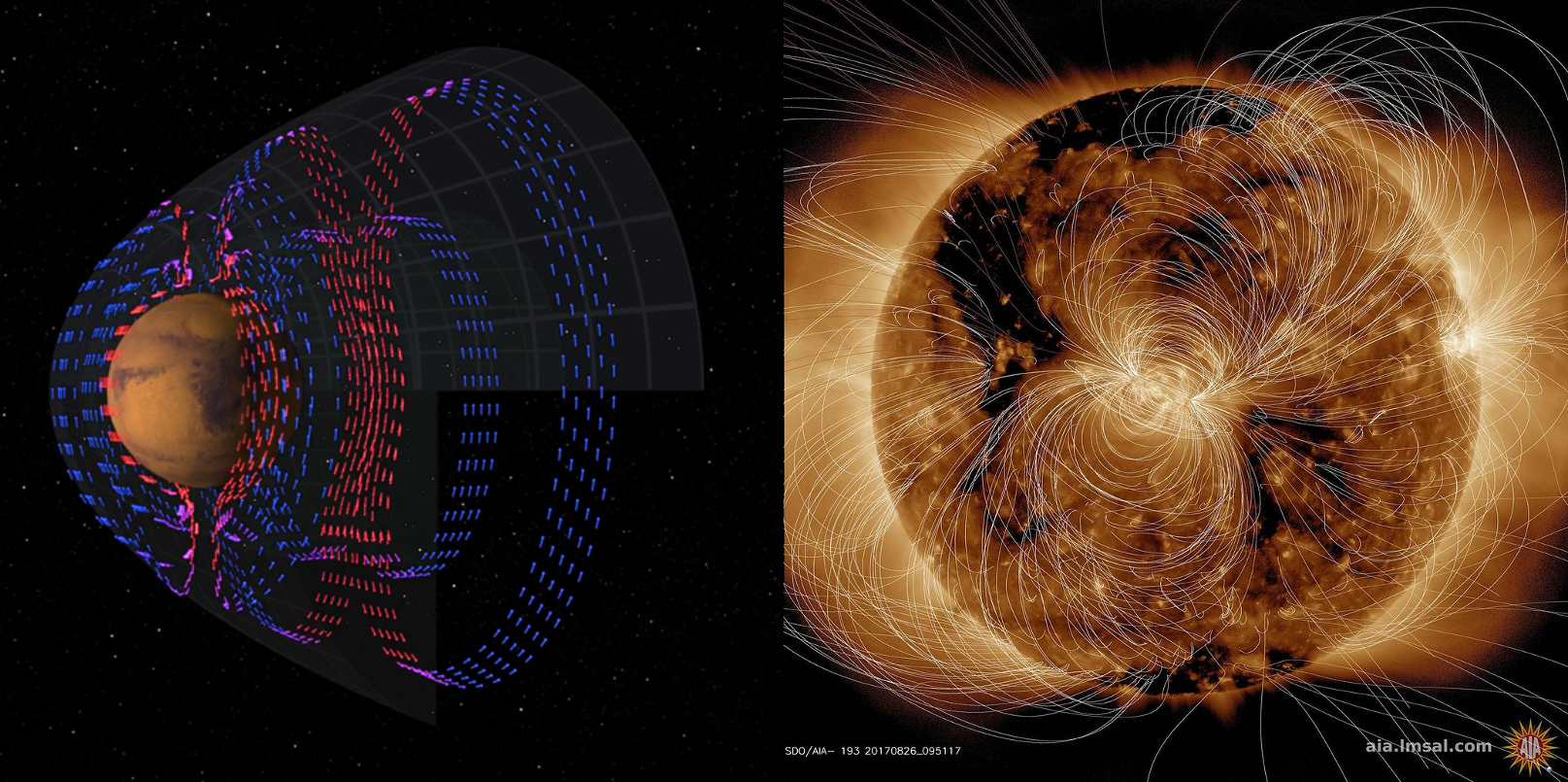A Martian Visits the Solar Corona

Join Dr. Gina DiBraccio, Dr. Aleida Higginson and Dr. Tristan Weber for a cross divisional guided conversation concerning the marvels and mysteries Sun’s and Mar’s magnetospheres, including a look into the Suns' magnetic topology and the impacts of Mar’s magnetosphere on atmospheric ion loss.
Event Presentation:
Selected background material:
Dr. Gina DiBraccio is the Acting Deputy Director of the Heliophysics Science Division at NASA GSFC and the Deputy Principal Investigator of the MAVEN mission. She is involved in Magnetometry efforts across GSFC, including the roles of STORM Magnetometer lead and a member of the MAVEN and Juno Magnetometer teams, among others. Her research focuses on magnetospheric physics and solar wind-planetary interactions for both intrinsic and induced planetary magnetospheres throughout the Solar System. Dr. DiBraccio implements a comparative planetology approach to understand various plasma physics phenomena occurring throughout planetary magnetospheres. To date she has been involved in research at Mercury, Mars, Jupiter, Ganymede, Saturn, Uranus, and Neptune. Most recently, she has been untangling the complex magnetic structure of the Martian magnetotail and investigating the impact of solar events on the magnetic environment of Mars. Dr. DiBraccio received her Ph.D. in Space Science from University of Michigan’s College of Engineering. Her thesis work investigated magnetic reconnection and space plasma dynamics throughout Mercury’s magnetosphere.
Dr. Tristan Weber studies how the evolution and habitability of planets are affected by the space environment. As a postdoctoral research in the Planetary Magnetospheres Lab at NASA GSFC, he works with data from the MAVEN and Juno spacecraft to perform large-scale statistical analyses of magnetic field structures in our solar system. He investigates how planetary magnetic fields interact with the solar wind, and how this interaction can alter the evolution of a planet’s atmosphere. Dr. Weber received his Ph.D. in Astrophysical and Planetary Science from the University of Colorado in 2020, with a thesis focused on characterizing the Martian crustal magnetic fields and their influence on atmospheric escape at Mars.




